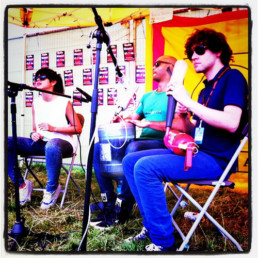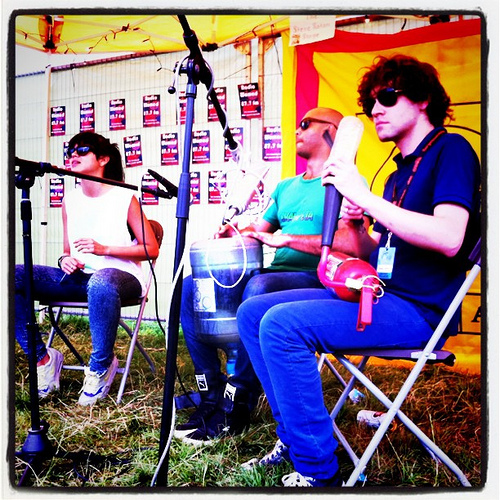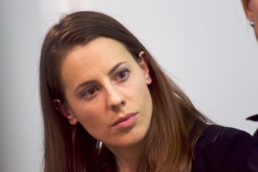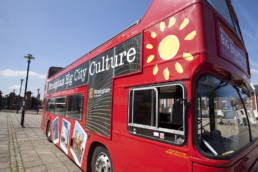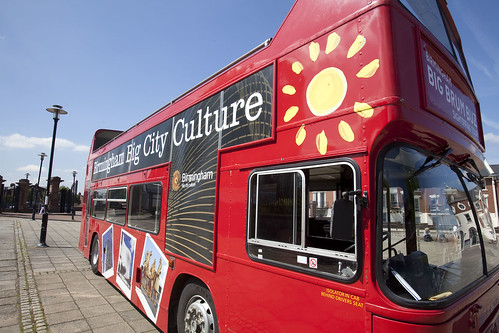Radio Womad gets Mashed
Continuing my experiments with mobile journalism, this weekend I embedded myself at Womad Festival with the onsite radio team.
I used last year's project with Shambala as a template for my activity. The live blog in particular carried through similar elements, including a mobile friendly blog and distribution techniques - but there were differences, as I'll explain.
Wi-fi Network
Uploading material on a 3G network was a real problem at Shambala, and as I've mentioned before this made mobile journalism at last year's festival very tricky. Thankfully this was not an issue at Womad, which was down to the excellent site wide public WiFi provided by Etherlive. I spoke to the MD Chris Green and he told me in total they shifted 1TB (terabyte) of internet traffic this weekend - which I got really excited about, my wife didn't.
Kit and Tech
Last year I had an Android HTC Tattoo, Flips, dictaphones, SLRs and a Flash mic. 2011, I had an iPhone 4. My dependency on additional bits of tech to give comprehensive multimedia coverage was less needed. It also meant that I approached it differently. Video was shot and uploaded directly to YouTube from my phone and photos were initially shared on Instagram first. I still had my SLR but Instagram tended to be my first port of call. I would like to find a web app that makes it more useable and interactive online - not least an app that allows search and the opportunity to search for tagged photos and install slideshows. Further investigation is needed into the Instagram Realtime API and these interfaces. At Womad Festival, all my photos were run through Flickr with video and slideshows broadcast on YouTube.
Radio Womad
Being involved with the Radio Womad staff meant audio was a priority, features and "Secret Sessions" (essentially backstage acoustic performances), were broadcast on the radio and enhanced for the internet. Unfortunately a big question mark still hangs over whether we have the right to publish this material. I hope we can as the Secret Sessions were fantastic - particularly the session with Bomba Estereo whose improvised instruments included a fire extinguisher and a water bottle.
Radio Womad's backstage gazebo was a perfect platform to let the artists do what they want in their way and I'm delighted there's a digital archive of this ready to be shared with a global audience. I think it would be great for Radio Womad to have a shareable archive of the sessions.
Whilst the video was by no means professional it would offer music fans a glimpse into the unique, unplugged gigs. Also many of the labels and artists liaisons want to see the material so it seems a shame not to share with the wider public. Surely sharing this material would be good for everyone?
Staff
My experience with Shambala was essentially to manage a team who in turn managed our Press Gang (teenagers we trained to capture footage on our behalf). For Radio Womad it was about adding value, enhancing social media and putting a multimedia twist on the audio material. Although the Radio Womad team were largely impressed by what I achieved it was difficult to wrangle multimedia stuff (which they were taking personally) off them, in the end I managed to steal memory cards and copy clips from the station server to create my material.
The benefit of the team at Shambala is that we saw the festival through younger eyes. I'd love to work with Radio Womad again but I wonder whether next time the project might benefit from repositioning itself with the main website, which could also help sidestep any reproduction permission issues.
Moving on
Whilst for the moment the secret sessions may remain secret it seems to me that this is a direction that I'd been thinking about with Village Underground "In The Cab" performances. I know recording and sharing the performance of the artist Marques Toliver secured him several UK gigs because the material was so shareable and exposure extended beyond the 300 people who turned up to see him live. This is an area which I will no-doubt return to when I undertake some more work with Village Underground later this month. As for the festival itself and working with Radio Womad, it was a hugely enjoyable experience and I would love the opportunity to do something next year.
I've collected everything together at the working blog, Facebook, and have hosted all material on the Mashed Festivals Soundcloud Flickr and YouTube Channels.
I would love to know what you think - or if you're interested in working with Mashed Festivals.
Counting the cost and benefits of community managers
The role of community manager has gone from being a social experiment to an integral part of the newsroom. But are they there to teach old hacks new digital tricks or is there now a genuine business imperative and ROI factor in having staff to represent your brand through social media?
Which side are you on?
Kate Day, social media and engagement editor for Telegraph.co.uk, and is about to appoint a community manager, a new role for the title. Although Day admits she spends a lot of time in both marketing and editorial departments the new role will be closely linked to editorial.
She tells me: “We received a lot of applications from journalists, and also social media marketing people. This role is rooted in editorial so we are looking for someone who really understands the newsroom and it's likely that they will be a journalist. The role will involve helping journalists source and develop news stories by making the best use new tools and platforms as well as helping to build a loyal, engaged digital audience.”
As far as Day is concerned, this role is there to not only help journalists do more but also to recommend the best social tools and skills to others. They will be required to have an overview of the industry and what competitors are doing with socially online.
The Telegraph’s community manager will focus largely on Facebook and Twitter but also keep an eye on comments on the site and the My Telegraph blogging platform.
Making it count
Day claims that because the Telegraph’s audience is fragmented across external networks and its own website, it’s no longer possible to generate a single stat to measure success.
“We can measure referral traffic, the number people on Facebook and Twitter amount of time they spend on the site and so on,” says Day. “There’s no single number that represents engagement or revenue return very well.”
Justin Fogarty is online community manager for Ariba a spend management site. He oversees a customer community called Ariba Exchange as well as managing several LinkedIn groups. He maintains that even from a B2B perspective the money is often difficult to trace, at least at first.
He writes on Mashable: “It’s not about ROI or advertising dollars at the beginning. It’s not about messaging and positioning. Customers will come back to a place with a compelling reason for going there in the first place.
“Let the user determine the model, and look at the type of user that you want to attract as the primary driver behind the online presence.”
But surely some companies by now are reaching a point where we can begin to see the money?
Social monetisation manager?
Mashable’s community manager Vadim Lavrusik, who previously worked at the New York Times, says making money is the next logical step for news organisations. He cites a job advert from Cox Media Group, which emphasises the revenue generation aspect of community management. Cox runs 15 broadcast television stations, 85 radio stations and eight daily newspapers. Interestingly, it already has a social media manager, Mathilde Picard, and this is an extra role – another example of how media groups create interaction first before moving to monetisation.
“In some ways, Cox is making a big bet that social media will play a big role in its revenue strategy — at least one big enough to require such a position,” says Lavrusik. “The position is part of a further shift in company strategy to invest in digital.”
The question is: are we ready to take this leap into a focus on not just interaction but revenue in the UK? Social media is about conversation, not pound signs, and brands risk losing credibility by seemingly selling out to advertising and harsh marketing messages.
Originally published on TheMediaBriefing
Can paywalls be sociable? David Cushman on social media in news publishing
Adopting a successful social media strategy doesn’t just mean getting yourself a Facebook page or Twitter profile. Social media is no longer an add-on – it must be at the centre of your business, according to one leading digital interaction expert.
David Cushman, MD of the 90:10 Group, who blogs at Fasterfuture.blogspot.com, told me in a video interview that the biggest mistake publishers can make in this area is adopting a heavy handed “top down” approach. “It is not a channel, it is not a way in which you distribute content … it has to be at the heart of what you do,” he says.
Audit first
Cushman’s mantra is to listen to both your organisation and your audience and keep an open mind. “You have to let your audience inform what you do. Only then will they interested in passing it around,” he says.
Paywalls hinder sharing
Few would deny this stuff is important. But what if your business model isn’t compatible with social sharing? Erecting a paywall, for example, around your content hinders exposure and the building of interpersonal networks. Cushman acknowledges specialist information, delivered well, can lead to a successful paywall model but closed is still not good enough.
The New York Times realised this and sidestepped the paywall model – NYTimes.com readers can view articles discovered through social media, even if you’ve passed your monthly limit. But as we’ve mentioned this approach undermines the paywall entirely.
Almost a quarter of a million people now digitally subscribe to The Financial Times, an increase of 8.1 percent since January 2011. But Cushman is cautious:
“Even they haven’t got it right for me, because they’re not doing it for me. It’s not focused enough and it’s not social.”
Who’s really open?
The Guardian’s call to media and technology bloggers proudly declares that it is an open platform. But as Cushman points out “the only truly open silo is the internet.”
Cushman (who spoke to the Guardian recently) thinks this attitude will encourage people who identify with the brand to contribute. Fundamentally, there has to be some incentive for the blogger to move onto the website. “The people who chose to go on their platform do so with a mission in mind”
Originally published on TheMediaBriefing
Making Our Presence Known #intheroom
According to Paul Murphy from The Destroyers one of the reasons why we missed out on the European Capital Of Culture award was that when the judges visited the city no-one on the ground cared about either the award or the cultural ongoings.
The traditional perception with Birmingham is that we do plenty of creative and cultural things but we don't like to shout about it. Cllr Martin Mullaney has pointed out several times during this City Of Culture bid that as a city we have very low levels of cultural engagement per head of population. I was determined in my role as Social Media Manager to increase engagement and prove that, given the right platform, we would shout about it.
My first day on the job involved working on the 24hour Blog run by Jon Bounds. We received a phenomenal amount of contribution to the Posterous site in a 24 hour period. Since then our engagement was spread across Facebook, Twitter and the main website.
When monitoring other shortlisted cities social media activities it was interesting to discover their bids were mainly limited to Facebook. We on the other hand had a much larger amount of Twitter followers. Today it passed the 1000 mark.
Only eight people were allowed to present the Birmingham's case to the judging panel in Liverpool, we wanted to increase our presence. Birmingham had plans to take a Battle Bus which would stage cultural flashmobs around Liverpool on the day.
Public Relations Manager Geoff Coleman mentioned doing something similar to 24hour blog and I pitched the idea of using Cover It Live as a scrolling commentary which could be displayed 'in the room'. It was important to gather all the different threads across multiple platforms. I also thought it was an ideal opportunity to make a virtual event out of our final submission. I passionately stated at the time,
"Can I just say that Birmingham's strength as a digital city is one of our greatest assets and it would be doing ourselves a great disservice not to do something really innovative."
I'm pleased to say that it was a success, there were around 900 messages of support over the period, and the Council Site where Cover It Live was embedded reported a spike of over 1000 unique users.
@Katchoo has blogged about what it was like to be involved in the event. A point well made was that it wasn't just the usual people mentioning the same things. The real success of the event came from the variety of comments, the amount of people involved and the many cultural things Birmingham offers. We're a culturally rich city that deserves recognition. And for once we really shouted about it.
Village Underground’s Social Life
Following a meeting with Auro and Clément at the beginning of April, I managed to sort some dates to come down and cover activities at Village Underground. Before I came down it was important to have some social media networks more sorted.
Village Underground now has a Twitter Account, a YouTube channel, and a Flickr site. I’ve also been overhauling their Facebook and Myspace presence. At the simplest level this has meant using all the logos and backgrounds so branding is carried across all elements. It also means effectively pulling content from elsewhere and thinking about re-distribution.
Spaghetti Junctions #1
I'm currently working on game based around a kind-of psycho-geographic version of the 'six degrees of seperation' idea. Basically, the game encourages players to (tenuously) link together Birmingham facts and myths. Here's a version played on Google Wave before Christmas:
[wave id='googlewave.com!w%252Bbh7I02lyA']
It was quite fun but as you can see it collapsed when we used Wave to discuss 'the process' of the game. And I couldn't engage enough people in Wave to make it worthwhile.
It might be more appropriate to run it in Twitter but I think before I jump on there I want to work out how to get people understand how the game runs. I was thinking I might put some rules up either here or on #Brum site.
If it has a click through Wordpress page to I might be able to take the game to a second stage and prove or disprove the facts or myths, offering more background and links away from the focus of gameplay. This might be the journalism but the degree of proven truthfulness could be used as a points system of sorts.
Well there's still a lot to work through... Would love to hear what you think of this idea, or if you have any strong opinions on the following questions then speak your brains below...
Is Twitter the best place to run the game?
Should I be wary of too many rules?
Any ideas how I can get more folk involved?
Should there be a live geo-tagging picture version - and might that get you extra points?
Is there anything we can use to graphically show the facts so it represents a load of spaghetti links?
Maps, Hare And Hounds, Kings Heath, 25/10
“Cycling to MAPS with new bike lights”
Was the first Tweet I sent out as I cycled up to Hare And Hounds, Kings Heath last night. My father-in-law had come round in the daytime and fixed my bike whilst I locked myself away in the study trying to get my head around Pixel Pipe. The up-hill pedal to the venue was an absolute pleasure. Nothing rattled for a change and I had brand new lights – one attached to my bike and another pinned to the strap of my camera bag – to guide my way.
I may have lost some of my cool by accidently leaving the camera bag flashing light on as I wandered up to the bar. But my mobile LED disco may have added further ambiance to Arc Vel's superb set. The new solo project from the former (much missed) Grandscope member was aided by his own visuals, which according to another former Grandscope member Hydey, had taken a week and a half to pull together.
“Gutted only caught last song by Tour Eifel, quality electronica with home made visuals”
Arc Vel should have been second not first as the next act didn’t really compliment the shoegazing frug of Maps instead being a falsetto voiced navel-gazing guitar player called It Hugs Back... hmmm.
“Maps kick off with It Will Find You followed by Papercuts”
A strong start indeed, James Chapman has now employed ‘a Dane’ to add extra texture on tour. It sounds superb and the new material swims happily alongside the old. About five songs in Chapman speaks and it’s then that I realise that he’s pretty ratted.
“Maps (chap)man is smashed but septembers provide more than ample support” I Tweet.
And the fact I didn’t spot that predictive text made that message partially incoherent indicates my state too. It’s a funny situation actually that someone like Ozzy Osbourne can spend the best part of his music career off his face but live electronic acts should always be sober and serious whilst they prod away at a laptop. I blame Kraftwerk.
“At some point in the near future you're going to choose between another pint or an album from Merch. How depressing is that?”
I Tweet before I head to the Merch store and find out that the new album is a tenner. It is signed though, and quality is worth paying for. Besides my freewheeling downhill cycle saves forking out on a taxi and is about 30 times more enjoyable.
#Brum Meet One

This is our first real meeting for#Brum a new hyperlocal news site for central Birmingham. We're still very much in development at the moment and we'd really like involvement, help and suggestions from non-MA Online Journalism students.
It would be great if you could comment on the conversation we had, or you can also track and make suggestions at our #Brum Wiki
You can right click 'save target' for the MP3 here or you can listen to it below.
[audio:http://dandavies23.wordpress.com/files/2009/10/hashbrummeetoneeq.mp3]BTW We got off to a poor start by not recording the first five minutes!
Social Media And Its Impact On Mainstream Journalism

I recently headed off to the BBC to hear Nic Newman present his paper 'The rise of social media and its impact on mainstream journalism'. They recorded the session so you might want to keep an eye on Reuters site for a better recording.

You can right click 'save target' for the MP3 here or listen below.
[audio:http://dandavies23.files.wordpress.com/2009/10/rise-of-social-media-impact-mainstream-journo-bbc-discussion.mp3]The discussion took place in the chamber facing a picture of Lord Reith which the chair points out at the beginning. Some notes and live twittering to accompany this talk can be found at Caroline Beavon's site. This is the post from Chiara Bolognini.
